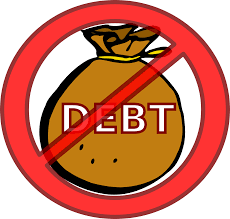
Form 1099-C and Cancelation of Debt is a system created by the Internal Revenue Service (IRS) to clarify all transactions made to taxpayers by loan service providers and creditors. Taxpayers must file Form 1099-C on debts above $600 that were canceled or forgiven. However, you must file the withdrawn amount in yearly tax returns. The tax also affects amounts less than $600 even without filing Form 1099-C.
As the name implies, the Cancellation of debt is when the lender cancels your debts. For example, you can request a debt settlement on your credit card. They may take some debt off your credit card if the request is approved. You can assume the act is debt cancellation, and the lender will mail you Form 1099-C. Form 1099-C is of three types. The leader uses Copy C, sends Copy A to the IRS, and sends you Copy B.
A commercial lender that canceled a debt worth above $600 must file a Form 1099-C to the debtor and a copy to the IRS. Student loans are common debt forgiven, your mortgage, repossession, abandoned property, credit card debt, and foreclosure. However, forgiveness is not free; you're expected to pay forgiveness or debt settlement tax to be pardoned.
Federal tax law treats canceled debt as income and requires you to file in tax even with an amount below $600 and without Form 1099-C. The canceled debt is considered taxable income, resolved by paying debt forgiveness taxes. Your canceled debt is filed on Schedule 1 Form 1040; Other Income.
To be clear, the tax paid on debt is not separate. The debt was treated as income tax before it was canceled, but the tax system will spread it over your tax return. The distribution will be based on your income, deductions, credits, adjustment, and the tax money withheld from your paychecks. That is the usual annual income and rollover tax burden that needs resolving. Whenever you have any canceled debt, report it as ordinary income when filing your taxes to get a tax refund. The downside is that if you get a cancellation that increases your income, it will indeed add up in tax than usual.
Form 1099-C is expected to be kept in a safe space where it can easily be used when filing your taxes. Those that seek the help of a CPA or tax preparing company should inform them of Form 1099-C and send them a copy for tax preparation. There is room for those that feel their canceled debt is not part of income tax. These people are to report this on Form 982 to inform the IRS of this notion.
The received form includes interest, penalties, principal, fines, and administrative costs. Canceled debt is written on Box 1 of Form 1040 or 1040-SR as Other income. You must include the canceled amount in the form regardless of how much, even when the IRS never sent you a Form 1099-C. You are not mandated to submit the form, but it will only do you good if you keep it safe for record reasons. You get this form usually on 31 January after the forgiveness.
Ensure you file the correct information required on the form. In case of a mistake, you can get a corrected form from the lender. It is a patriotic act to file the canceled debt with your taxes, and you can contact your creditor if you did not get a form.
FOR MORE INFORMATION ON HOW PAT RASKOB CAN BEST HELP YOU WITH YOUR TAX FILING NEEDS, PLEASE CLlICK THE BLUE TAB ON THIS PAGE.
THANKS FOR VISITING.
Pat Raskob